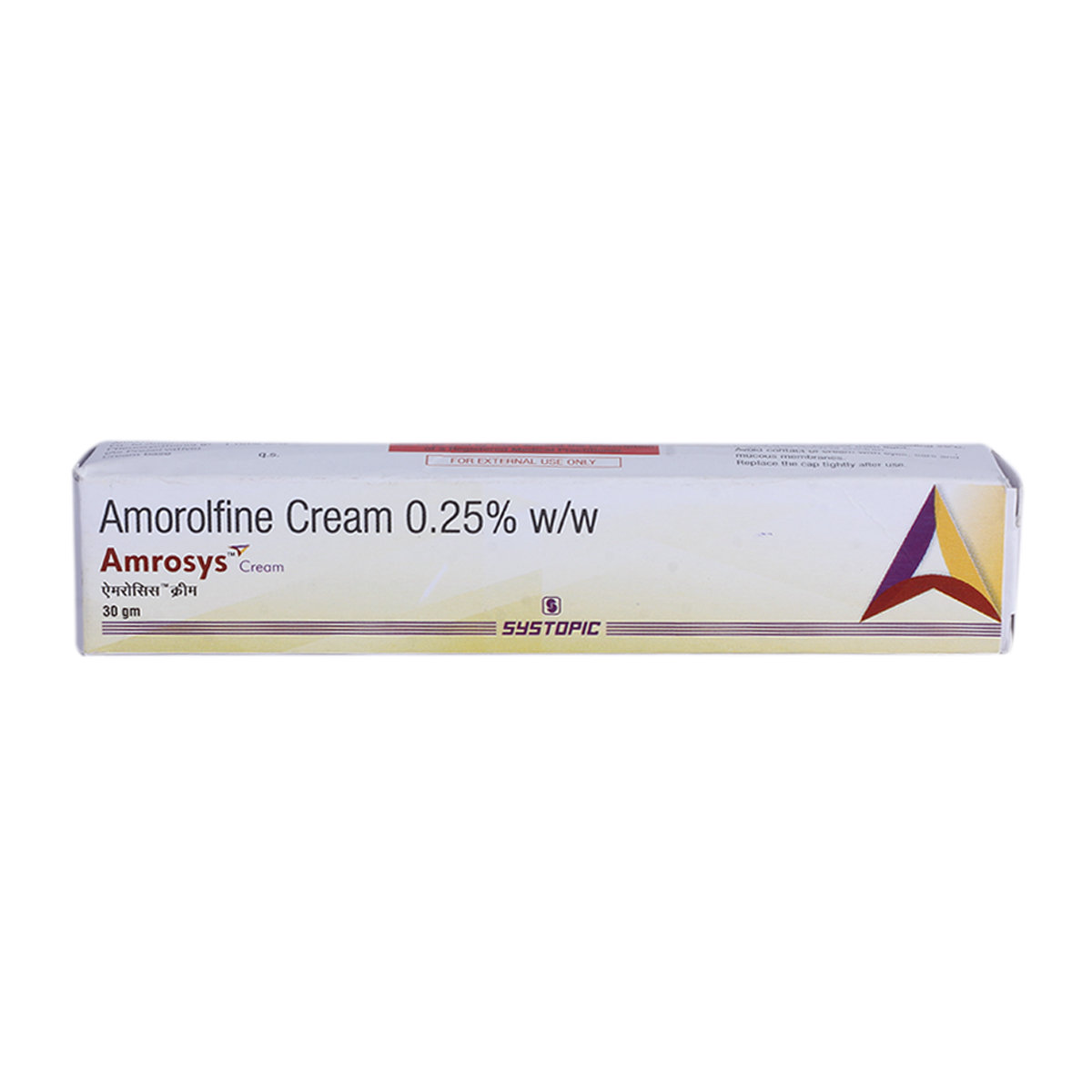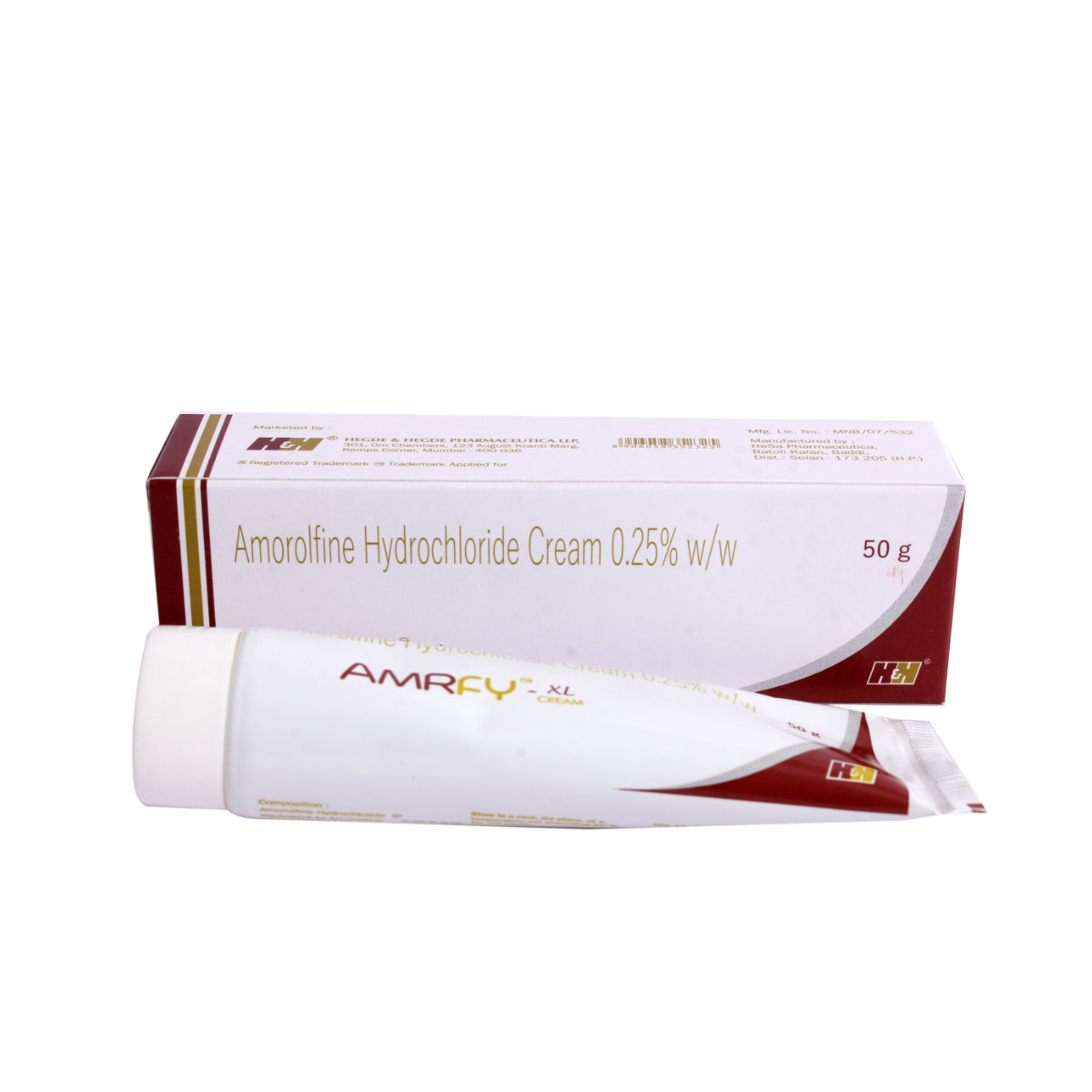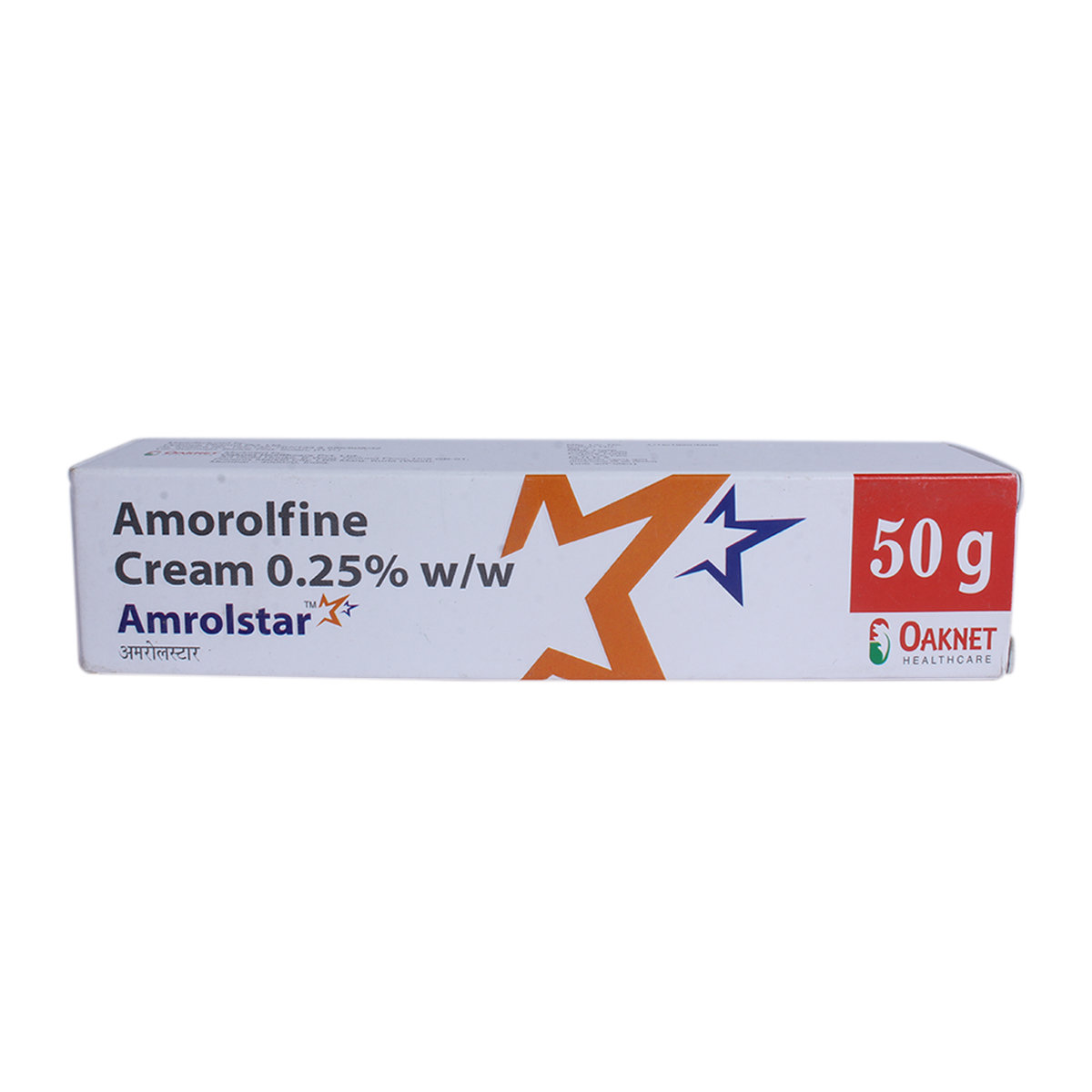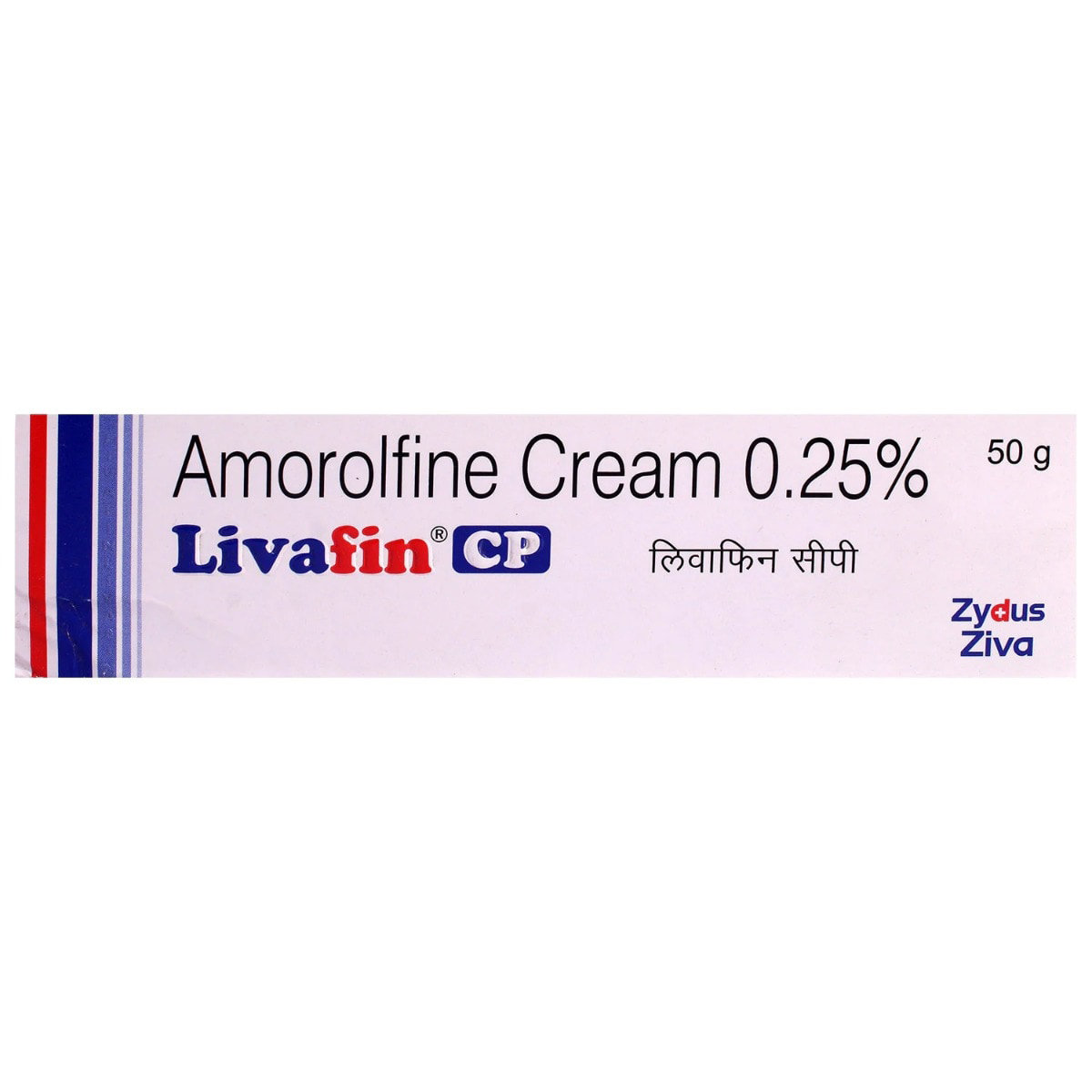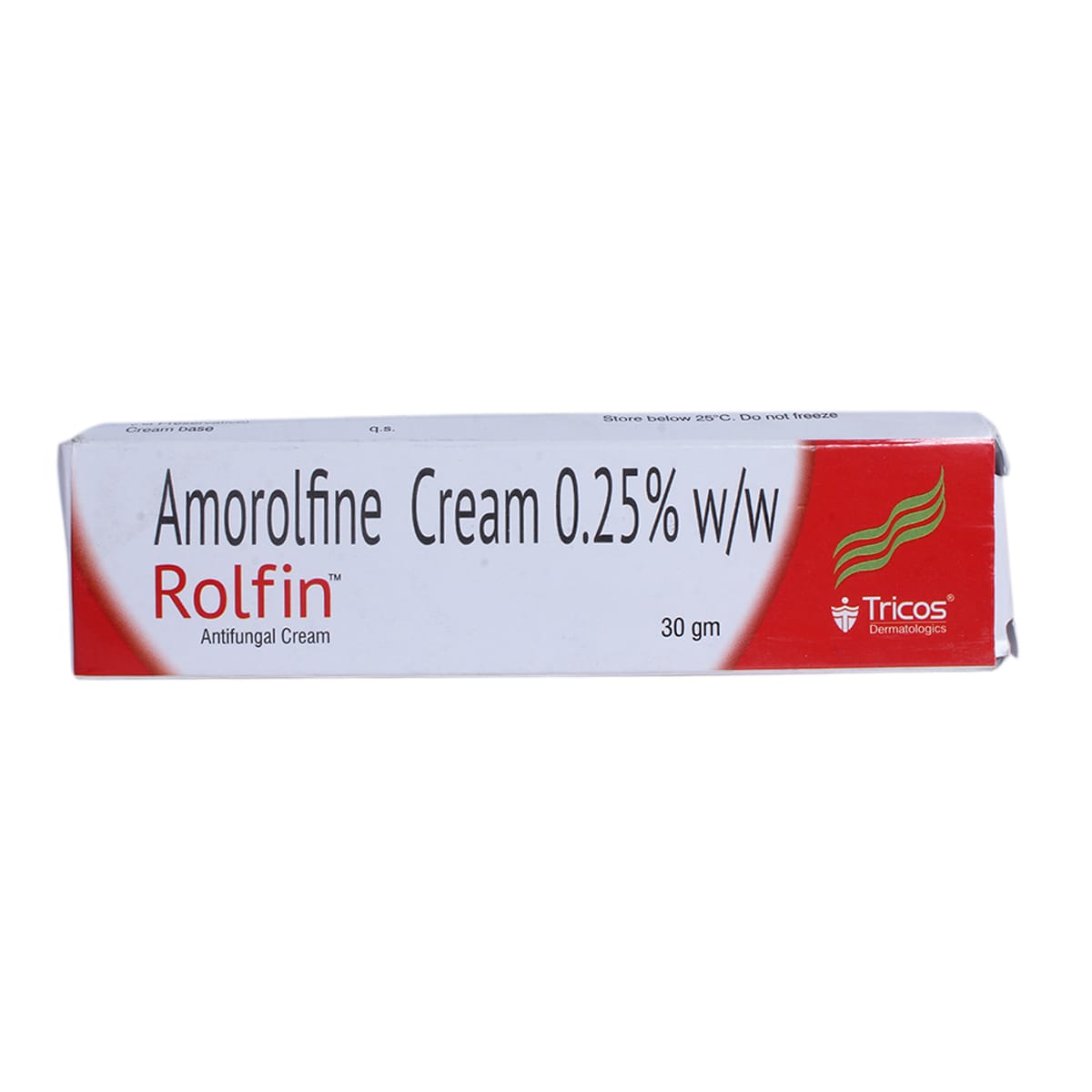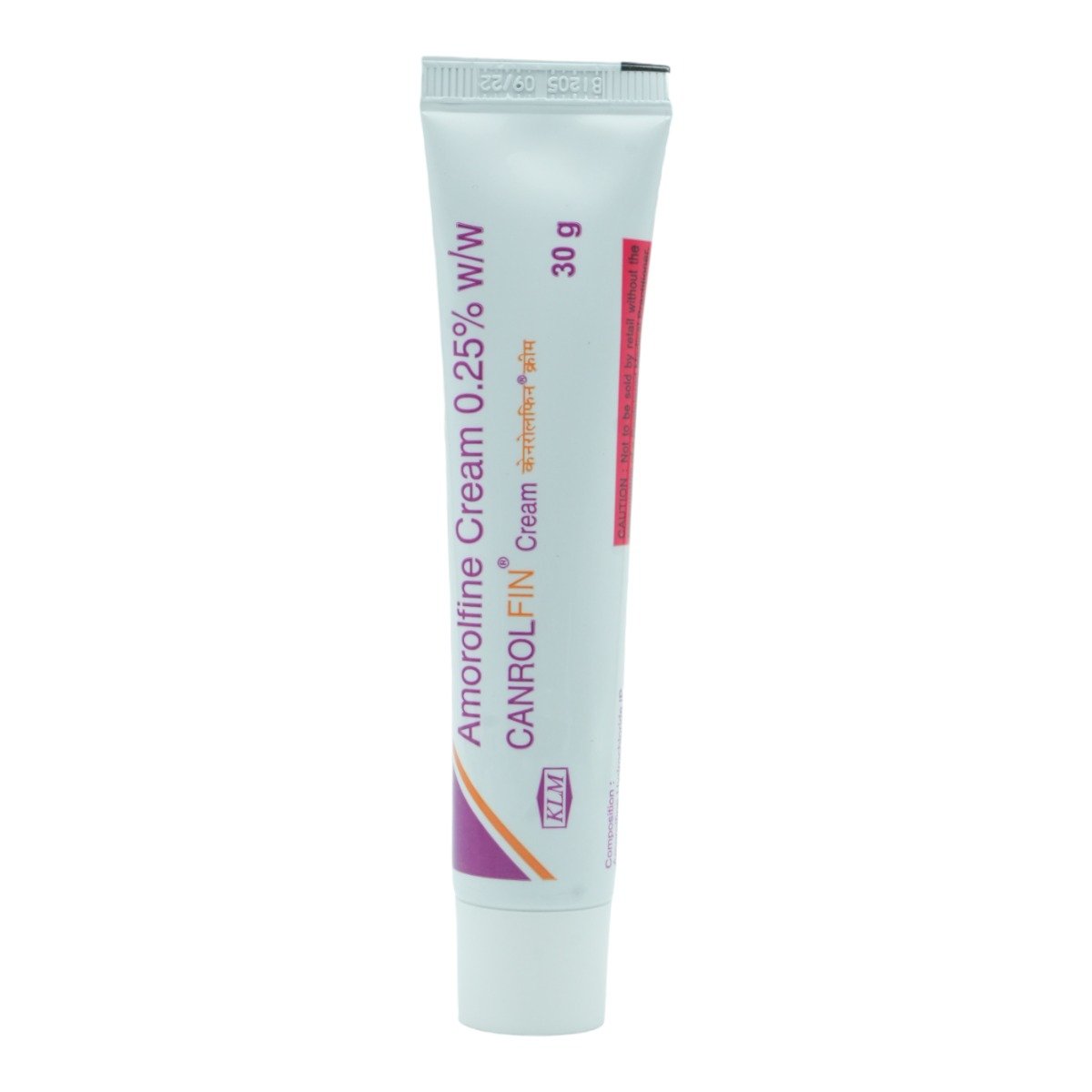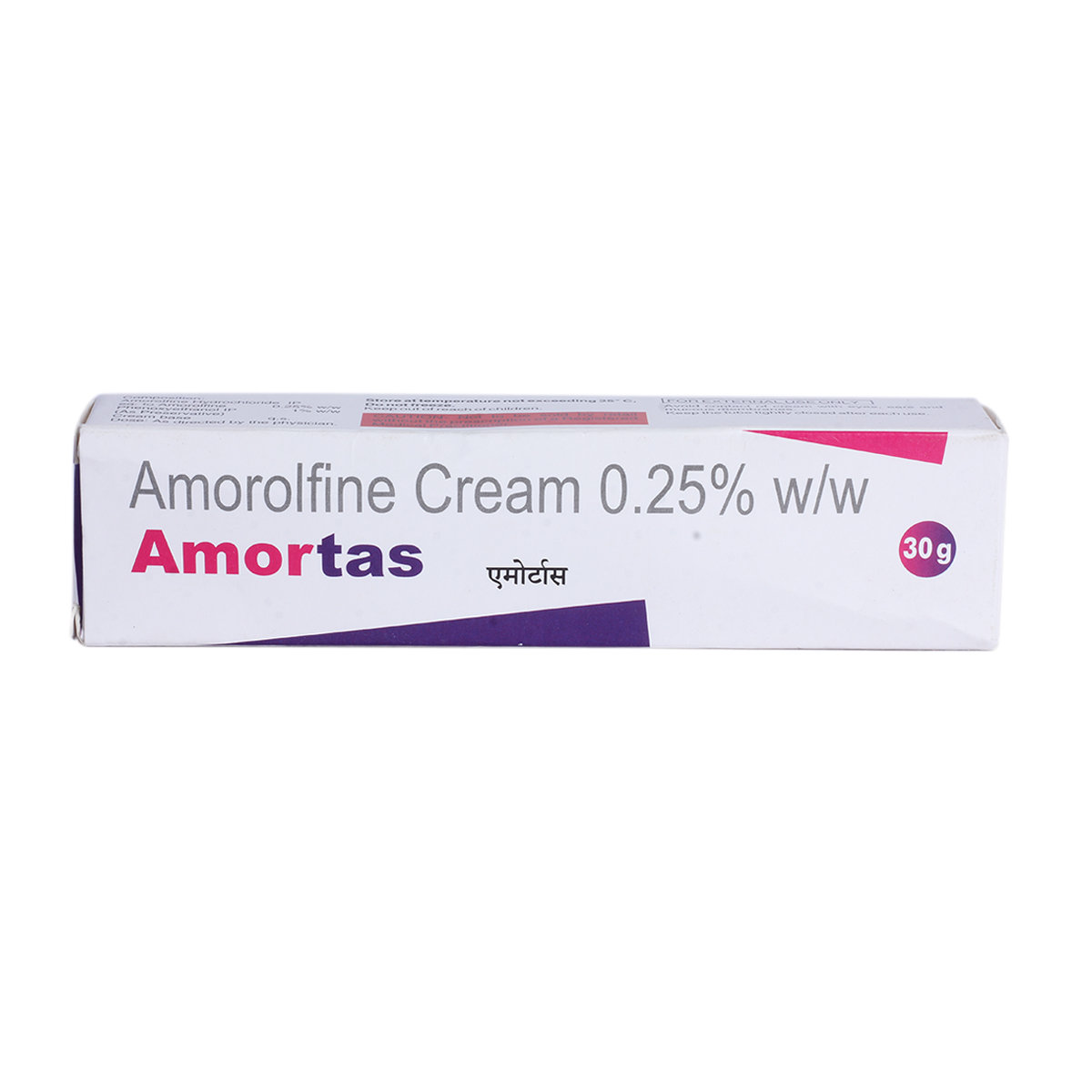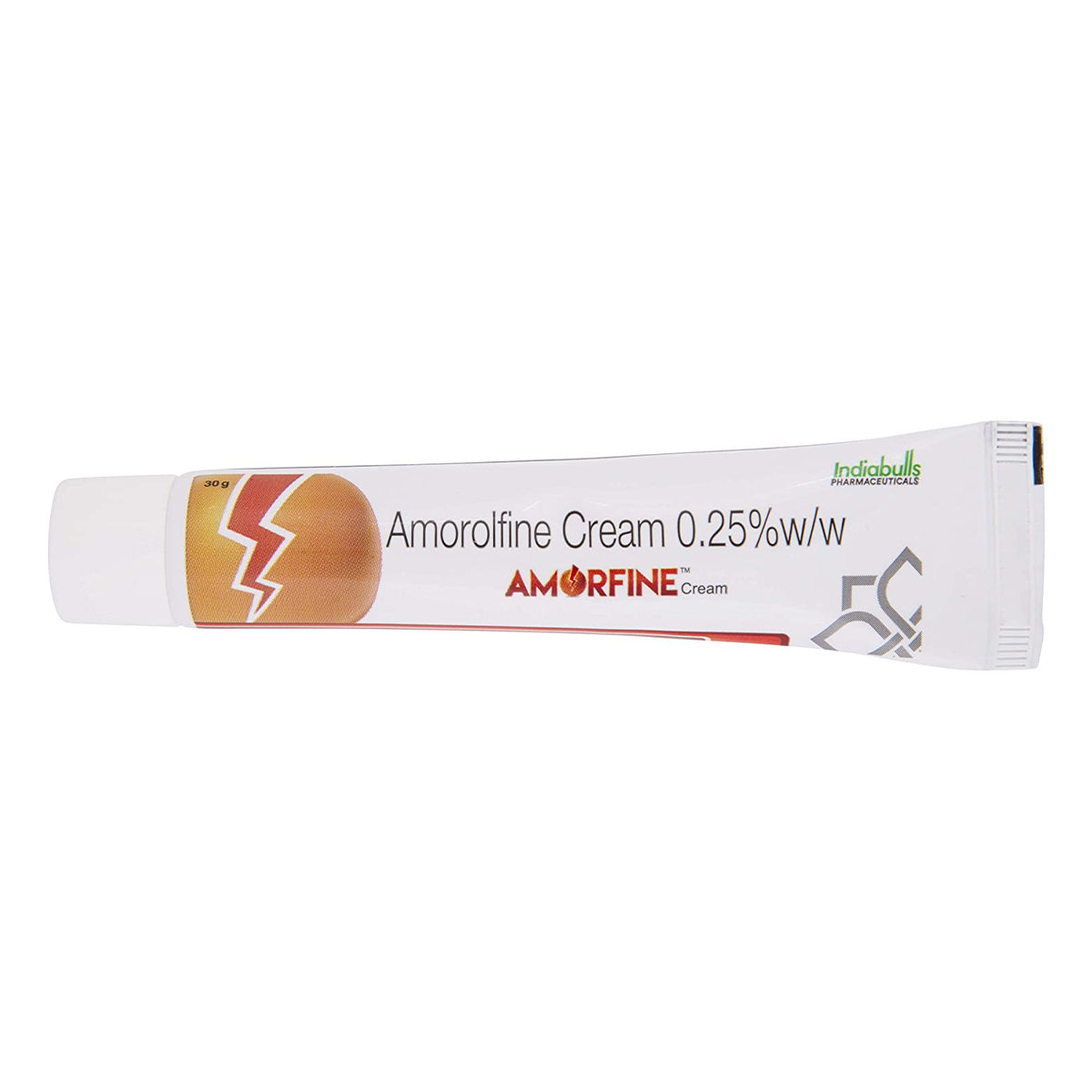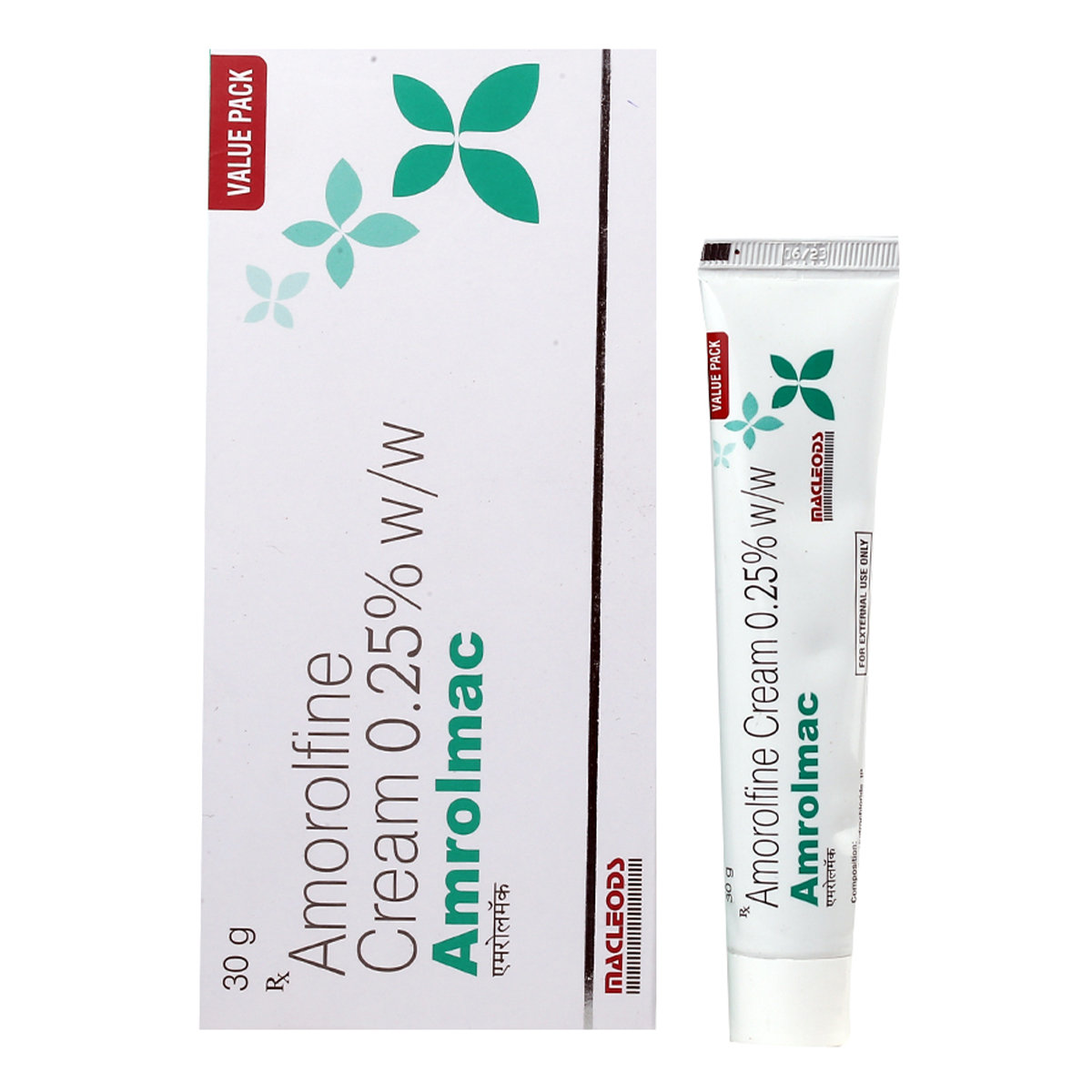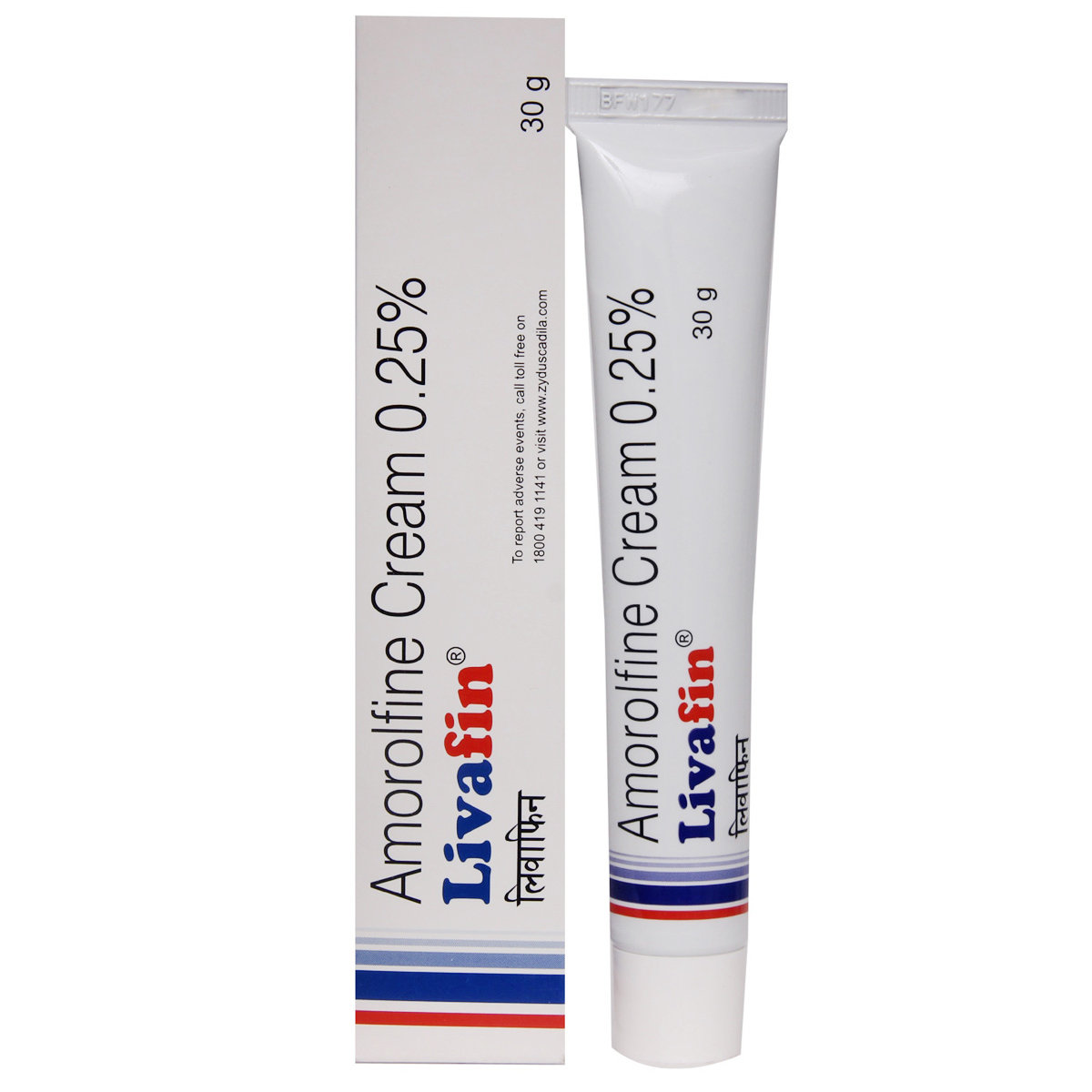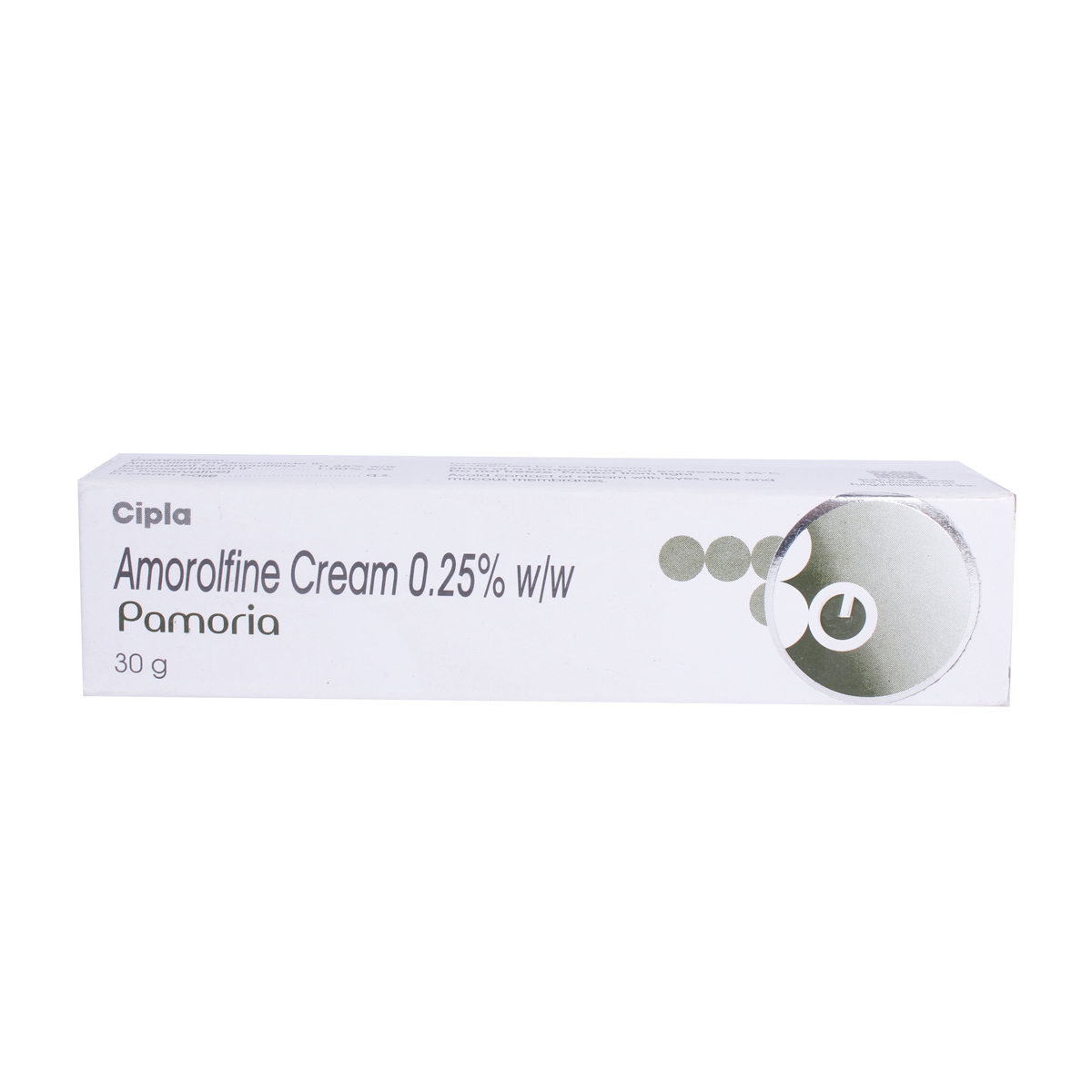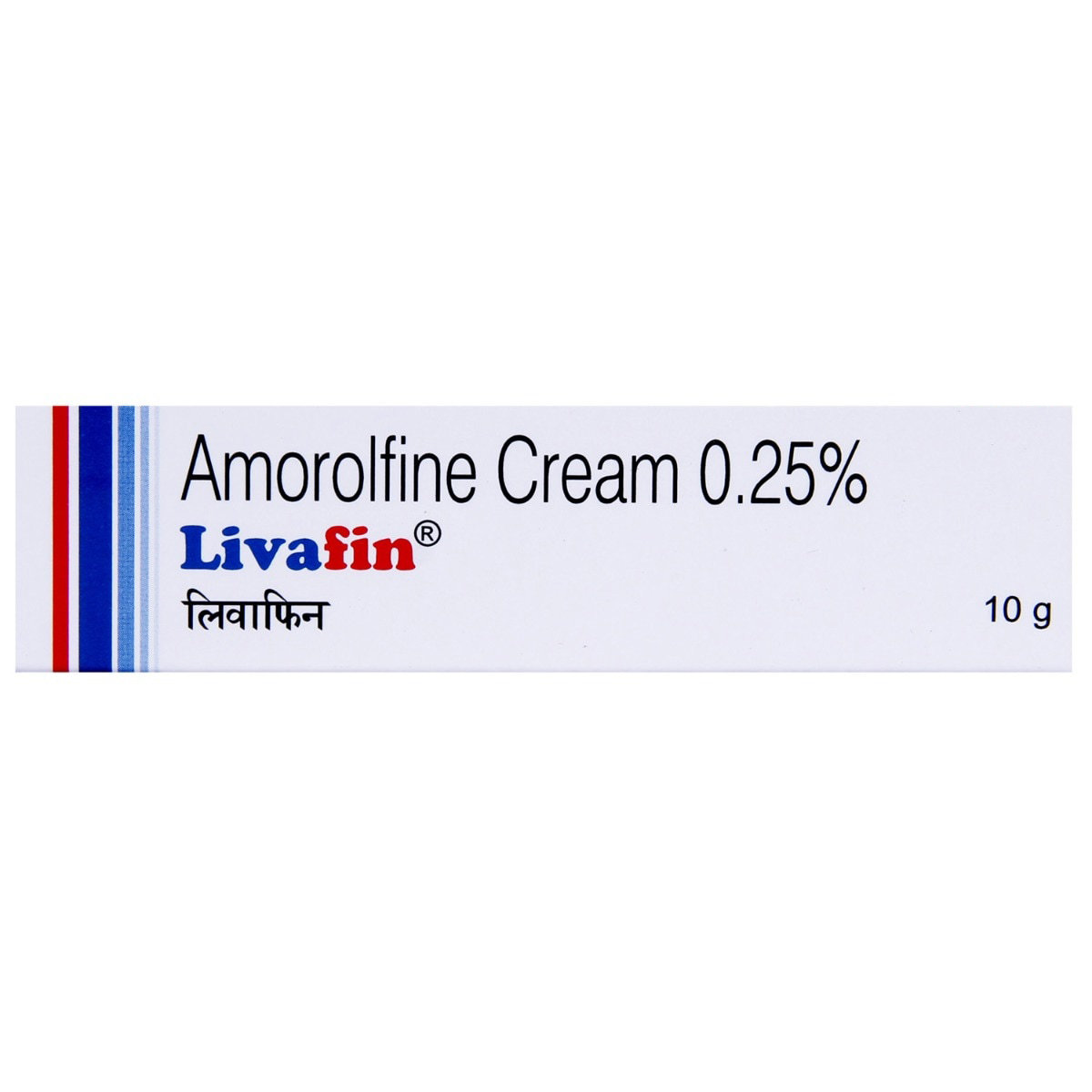Amrolwin Cream 30 gm
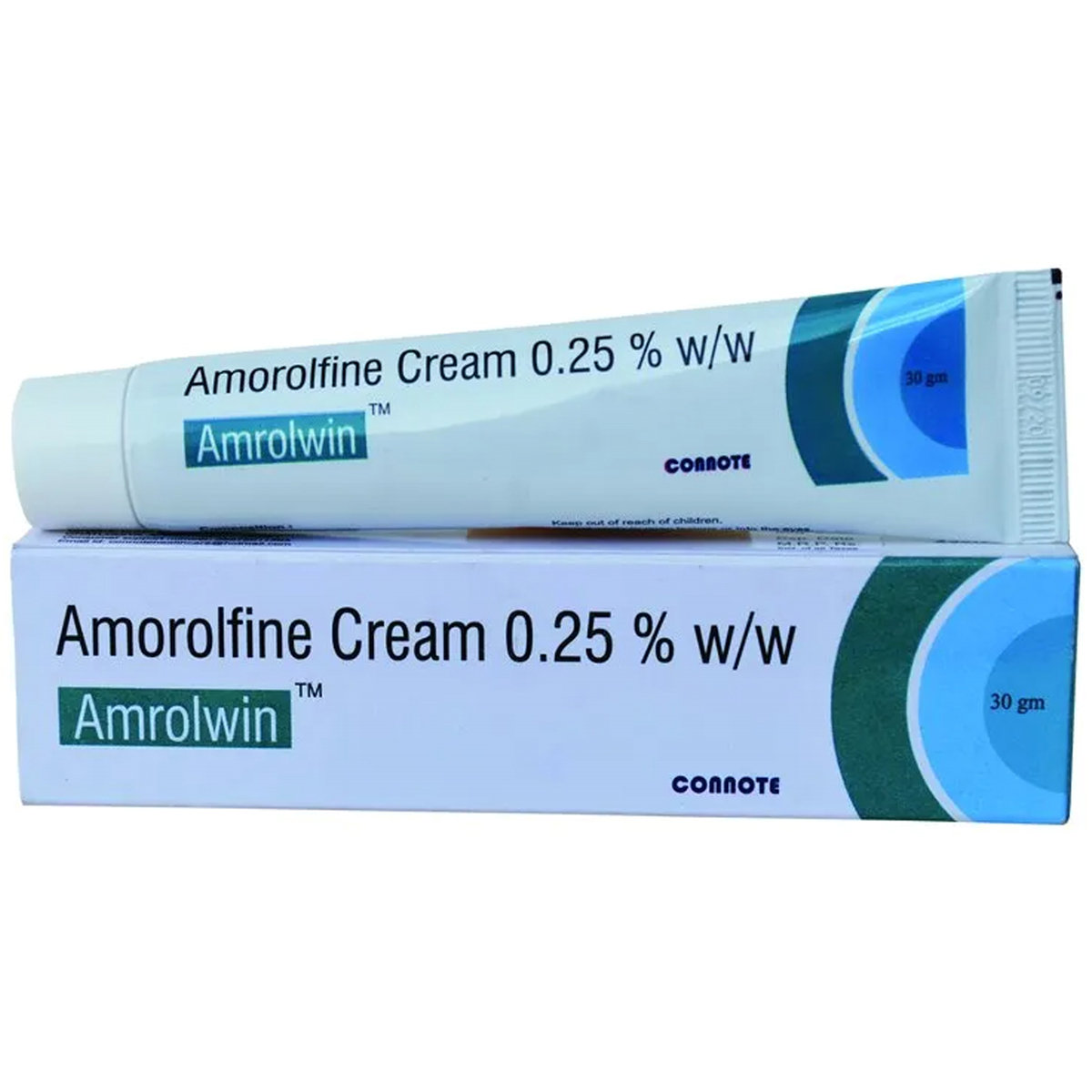

MRP ₹270
(Inclusive of all Taxes)
₹40.5 Cashback (15%)
Provide Delivery Location
Online payment accepted
 Prescription drug
Prescription drugWhats That
Composition :
Manufacturer/Marketer :
Consume Type :
Return Policy :
Expires on or after :
About Amrolwin Cream
Amrolwin Cream belongs to a class of drugs called 'antifungal' primarily used to treat fungal nail infections. Fungal infection occurs when a fungus invades and affects the tissue on the skin. Symptoms of a fungal infection include skin rash, irritation, redness, and scaling of the skin.
Amrolwin Cream contains 'Amorolfine' that works by stopping producing a chemical called 'ergosterol' in fungi that causes nail infection. Without ergosterol, the fungus cannot survive. As a result, infection-causing fungi die.
Use Amrolwin Cream as suggested by your doctor. Common side effects of Amrolwin Cream may include dry skin, itching, redness, or burning sensation of the skin. Most of these side effects of Amrolwin Cream do not require medical attention and gradually resolve over time. However, if the side effects persist or worsen, please consult your doctor.
If you are pregnant or a nursing mother, it is advised to consult a doctor before using Amrolwin Cream. If you use Amrolwin Cream in topical form, avoid smoking or going near naked flames as Amrolwin Cream catches fire and burns easily. If you are using any steroidal cream, lotion or ointment, inform your doctor before taking Amrolwin Cream to adjust the dose.
Uses of Amrolwin Cream
Directions for Use
Medicinal Benefits
Amrolwin Cream is an antifungal that is primarily used to treat fungal infections of nails and skin such as ringworm, jock itch and athlete’s foot, seborrheic dermatitis (dry, flaky skin on face, scalp, chest, upper back, or ears) and pityriasis (a type of skin rash that causes scaly, discoloured patches on chest, back, legs and arms). The fungal cell membranes are essential for their survival as they prevent unwanted substances into the cells and stop the leakage of cell contents. Amrolwin Cream causes holes in the fungal cell membranes and kills fungi. Thereby, clears fungal infection and provides relief from cracking, burning, scaling and itching of the skin caused due to infections.
Storage
Drug Warnings
Before using Amrolwin Cream, let your doctor know if you have a history of liver diseases, adrenal gland problems, cataract, glaucoma, diabetes or allergic reactions to any medicine ingredient. Let your doctor know if you plan to become pregnant or already pregnant and a lactating mother. Studies show that there may be harmful effects on the baby; hence Amrolwin Cream should be used with caution in pregnancy under your doctor's supervision. If you apply Amrolwin Cream to breasts or nipple for treatment, wash it off while nursing your baby. Amrolwin Cream is for external use only, so avoid contact with the eyes, the mouth, or intravaginally. Notify the doctor if there is no improvement after one week of treatment for tinea cruris or tinea corporis or two weeks for tinea pedis. When using Amrolwin Cream in the groin area, patients should use the medication for two weeks only. Prolonged use of Amrolwin Cream may cause hormonal suppression, Cushing's syndrome, hyperglycemia (increased blood sugar level), and glucosuria (high sugar in urine) in some patients. Apply sunscreen (SPF 30 or higher) whenever you go outdoor in the sunlight.
Drug-Drug Interactions
Drug-Drug Interactions
Login/Sign Up
Drug-Food Interactions
Drug-Food Interactions
Login/Sign Up
Diet & Lifestyle Advise
- Always wear loose-fitting clothes to avoid further sweat and spread of the fungal infection.
- In wet places such as changing rooms and gym showers, don’t walk on barefoot to prevent fungal infections.
- Regularly change your socks and wash your feet. Avoid shoes that make your feet sweaty and hot.
- Regularly change your socks and wash your feet. Avoid shoes that make your feet sweaty and hot.
- Do not walk barefoot at places like gym showers to prevent fungal infections.
- Do not scratch the affected area of skin as it can spread the infection to other body parts.
- Avoid sharing towels, combs, bedsheets, shoes or socks with others.
- Wash your bedsheets and towels regularly.
- Follow a candida diet if you suffer from vaginal yeast infection. Candida diet excludes high sugary foods, some dairy products and foods with artificial preservatives.
- Avoid or limit the intake of alcohol and caffeine.
Side Effects of Amrolwin Cream
- Itching
- Dry skin
- Redness
- Burning sensation of the skin
Habit Forming
Therapeutic Class
All Substitutes & Brand Comparisons
RX
Nixiclin-XL 0.25% Cream 50 gm
Canixa Life Sciences Pvt Ltd
₹384
(₹6.91/ 1gm)
14% CHEAPERRX
Amrosys 0.25% Cream 30gm
Systopic Laboratories Pvt Ltd
₹265
(₹7.95/ 1gm)
1% CHEAPERRX
Amrfy-XL 0.25% Cream 50 gm
Hegde & Hegde Pharmaceutica Llp
₹467.5
(₹8.42/ 1gm)
3% COSTLIER
Product Substitutes
Drug-Diseases Interactions
Drug-Diseases Interactions
Login/Sign Up
FAQs
Amrolwin Cream is safe to use with doctor’s advice and over a limited period (1-2 weeks). Let your doctor know if your symptoms are not relieved by then or experience any side effects.
Amrolwin Cream consists of Amorolfine that should be used after consulting with doctor if a person has raised blood sugar levels (diabetes mellitus).
You are required to maintain at least a three-hour gap after application of Amrolwin Cream if you are using more than one topical medicine.
No, do not stop taking Amrolwin Cream on your own even if the symptoms are relieved until your course advised by the doctor is finished.
There is limited data on how Amrolwin Cream affects breastfeeding. Please consult your doctor before starting Amrolwin Cream. However, if nursing mothers apply Amrolwin Cream to their breasts for treatment, it is advised to wash the affected area thoroughly before breastfeeding the baby.
Amrolwin Cream contains 'Amorolfine' that works by stopping producing a chemical called 'ergosterol' in fungi that causes nail infection. Without ergosterol, the fungus cannot survive. As a result, infection-causing fungi die.
Amrolwin Cream is for topical (for skin) use only. Do not put bandage or dressing on the affected area while treating with Amrolwin Cream unless the doctor advised. If the medicine gets into your eyes, nose, mouth or vagina, rinse with cold water. Do not apply Amrolwin Cream on open wounds, lesions and blisters.
Amrolwin Cream, when used for longer periods, can cause thinning and weakening of the skin. Please stop using Amrolwin Cream and immediately consult your doctor if you notice these symptoms.
Yes, fungal infection is a contagious skin condition which spreads from one person to another through direct skin to skin contact or by contact with contaminated soil or surfaces and infected animals. Therefore, it is recommended to avoid close direct contact until the infection is clear and avoid sharing things with the infected person as it can also spread the infection.
You are recommended to apply makeup or sunscreen to the treated area of skin after a minimum of 20 minutes of using Amrolwin Cream.
You are recommended to use Amrolwin Cream for as long as your doctor has prescribed it. However, if the condition worsens or persists after 2 to 4 weeks of treatment with Amrolwin Cream, please consult a doctor.
Drug-Drug Interactions Checker List
- BUDESONIDE
- FORMOTEROL
- COBICISTAT
- RITONAVIR
Special Advise
It is advised to reach out to your doctor if the fungal infection symptoms persist or worsen after two treatment weeks. Before applying Amrolwin Cream, clean and dry the affected area. Avoid contact of Amrolwin Cream with nose, mouth or eyes. If Amrolwin Cream comes in contact with these areas accidentally, rinse with water thoroughly. Do not wash the treated areas for a minimum of 3 hours after you apply Amrolwin Cream.
Disease/Condition Glossary
Fungal infection is a skin disease in which a fungus attacks the tissue and cause infection. Fungal infections may be contagious (spread from one person to another). Ringworm is a common fungal infection of skin or scalp contagious and causes a rash resembling a worm in a ring shape. Jock itch (also known as tinea cruris) is a fungal infection of the skin that causes an itchy, red rash in warm and moist areas of the body such as the groin, buttocks, and inner thighs. Athlete’s foot (also known as tinea pedis) is a fungal infection that usually starts between the toes, especially in people who have extremely sweaty feet and wear tight-fitting shoes. It occurs most commonly in athletes. It causes itching, burning, or stinging sensation due to a scaly rash. Seborrheic dermatitis is a skin condition that causes an itchy rash with dry, flaky scales on the skin that contains oil glands such as the scalp, face, back, and upper chest. Fungal infection in nails happens when there is an overgrowth of fungi in, under, or on the nail. Fungal infections usually occur in toenails than fingernails, likely because toes remain under shoes, in a warm, moist environment.

Have a query?
Buy best Dermatology products by
Others
AYUR
FIXDERMA
BIODERMA
VENUSIA
CANDID
SELSUN
ABZORB
ATODERM
CIPHANDS
KETO
MINTOP
UVAVO
8X
MELALUMIN
MORR
OILATUM
REJUHAIR
SUNCROS
TETMOSOL
UNISON
UV DOUX
ATBRO SAFEXX
BETADINE
COLOPLAST
DR. MOREPEN
HAIR 4U
LA SCREEN
MEDERMA
RING GUARD
SHYN-ON
SOLSET
SUNSTOP
YUVINIE
A-DERMA
AHD
ALCONANZ
AQUAHOLD
AVARTA
AVENE
BIOLINE
BIOWRIGHT
CETRILAK
CUTICOLOR
CUTILOCK
DANDEL PLUS
DEOPHIN
DOUX
DYSIS
ENMASK 50
EXIZOL
FAIR INSTA
GETRYL
GORGEUS
GUNEERA
HAIR YUTH
HH MITE
I-GLOW
ITCH GUARD
KETOFLY
KETOMAC
KETOPZ
KETOSTAR
KZ
LIPZ
MANKIND
MEDRAYS
MELAGARD
MELNORA BLUV
MICROSTERILE
NO SCARS
OAKNET
ONABET
PARASOFT
PERCOS
PHOTON
PHOTOSTABLE
PHYSIOGEL
PROTEK
RADIBAN
RASHFREE
REGALIZ
RENOCIA
SALISIA
SEBANDRO
SEBORBAR
SESTRY
SOLASAFE
SOLECROSS
STERILLIUM
SUDERMA
SUN KROMA
SUNCLIP
SUNHEAL
SUNMATE
SUNTRIS
TAIYU
TEDIBAR
THERUPTOR
TRICOGRO
Glenmark Pharmaceuticals Ltd
Sun Pharmaceutical Industries Ltd
Klm Laboratories Pvt Ltd
Cipla Ltd
Canixa Life Sciences Pvt Ltd
Abbott India Ltd
Ajanta Pharma Ltd
Intas Pharmaceuticals Ltd
Dr Reddy's Laboratories Ltd
East West Pharma India Pvt Ltd
Alkem Laboratories Ltd
Atopic laboratories Pvt Ltd
Hegde & Hegde Pharmaceutica Llp
Brinton Pharmaceuticals Ltd
Torrent Pharmaceuticals Ltd
Amwill Healthcare Pvt Ltd
Leeford Healthcare Ltd
Palsons Derma Pvt Ltd
Oaknet Healthcare Pvt Ltd
Med Manor Organics Pvt Ltd
Micro Labs Ltd
Dermocare Laboratories Gujarat Llp
Fixderma India Pvt Ltd
Apex Laboratories Pvt Ltd
Mankind Pharma Pvt Ltd
Ipca Laboratories Ltd
Yaher Pharma
Systopic Laboratories Pvt Ltd
Menarini India Pvt Ltd
Ethinext Pharma
Nemus Pharmaceuticals Pvt Ltd
Skinocean Pharmaceuticals
Dermacia Healthcare
Inex Medicaments Pvt Ltd
Lupin Ltd
GlaxoSmithKline Pharmaceuticals Ltd
Talent India Pvt Ltd
Zydus Cadila
Kivi Labs Ltd
Zydus Healthcare Ltd
Hbc Dermiza Healthcare Pvt Ltd
Mrhm Pharma Pvt Ltd
Regaliz Medicare Ltd
Sol Derma Pharmaceuticals Pvt Ltd
Newtrimed Healthcare Pvt Ltd
Wallace Pharmaceuticals Pvt Ltd
Eskon Pharma
Glowderma Lab Pvt Ltd
La Pristine Bioceuticals Pvt Ltd
Mohrish Pharmaceuticals Pvt Ltd
Percos India Pvt Ltd
Rockmed Pharma Pvt Ltd
Macleods Pharmaceuticals Ltd
Praise Pharma
Ethicare Remedies Pvt Ltd
Kaizen Drugs Pvt Ltd
Aurel Biolife
Rely On Pharmaceuticals
Wockhardt Ltd
Galcare Pharmaceuticals Pvt Ltd
Elder Pharmaceuticals Ltd
Indiabulls Pharmaceuticals Pvt Ltd
La Med Healthcare Pvt Ltd
Biocute Life Care
Yap Bioceuticals
Yash Pharma Laboratories Pvt Ltd
Zee Laboratories Ltd
Apple Therapeutics Pvt Ltd
Adonis Laboratories Pvt Ltd
Albatross Healthcare Pvt Ltd
Galderma India Pvt Ltd
Prism Life Sciences Ltd
FDC Ltd
Alniche Life Sciences Pvt Ltd
Salve Pharmaceuticals Pvt Ltd
West Coast Pharmaceuticals Pvt Ltd
Dermarex HealthCare India Pvt Ltd
Arka Vital Science Pvt Ltd
Dermajoint India
Gary Pharmaceuticals Pvt Ltd
Grace Derma Healthcare Pvt Ltd
Karlin Pharmaceuticals & Exports Pvt Ltd
Skinska Pharmaceutica Pvt Ltd
Uniza Healthcare Llp
Alembic Pharmaceuticals Ltd
Cadila Healthcare Ltd
Cadila Pharmaceuticals Ltd
Cosmofix Technovation Pvt Ltd
Human Pharmaceuticals
Indolands Pharma Pvt Ltd
Lyra Laboratories Pvt Ltd
Akumentis Healthcare Ltd
Entod Pharmaceuticals Ltd
Iceberg Health Care Pvt Ltd
Jenburkt Pharmaceuticals Ltd
P and P Dermaceuticals Pvt Ltd
Dabur India Ltd
Indchemie Health Specialities Pvt Ltd
Olcare Laboratories Pvt Ltd
Unison Pharmaceuticals Pvt Ltd
BODY CREAM
Body Lotion
Face Cream
Shampoo
Sun Screen
Face Gel
Soap
Face Wash
HAIR SOLUTION
Face Serum
BODY GEL
Hair Lotion
Hair Serum
Dusting Powder
ANTISEPTIC
FACE CLEANSER
Face Lotion
Body Wash
Body Spray
Eye Cream
FUNGAL INFECTION
Foot Cream
Conditioner
Eye Gel
Cleanser
Hair Cream
Hair Oil
Face Mask
Hair Gel
Sanitizer
Hair Spray
Moisturiser
Skin Ointment
Lip Balm
Capsule
Eye Serum
Intimate Wash
Specialty Supplements
Hand Cream
Facial Spray
SPECIALITY SUPPLEMENT
Face Toner
MEDICATED SHAMPOO
Tablet
Talcum Powder
BABY SUNSCREEN
Body Butter
Body Scrub
DIAPER RASH CREAM
EYE SOLUTION
FACIAL WIPE
Gargle
Hand Wash
Intimate Spray
Lip Serum
Lubricant Gel
MEDICATED CREAM
Nail Polish
VITAMIN D
Alcohol
Safe if prescribed
No interaction found/ established. Please consult your doctor before using Amrolwin Cream.
Pregnancy
Caution
Amrolwin Cream is Category C pregnancy drug and is given to a pregnant woman only if the doctor thinks benefits outweigh risks.
Breast Feeding
Unsafe
There is limited data on how Amrolwin Cream affects breastfeeding. Please consult your doctor before starting Amrolwin Cream. However, if nursing mothers apply Amrolwin Cream to their breasts for treatment, it is advised to wash the affected area thoroughly before breastfeeding the baby.
Driving
Safe if prescribed
Amrolwin Cream does not influence on the ability to drive or use machines.
Liver
Caution
If you have any concerns regarding the use of Amrolwin Cream in patients with Liver problems, please consult a doctor.
Kidney
Safe if prescribed
Amrolwin Cream is safe for patients with kidney disease if prescribed by a doctor.
Children
Safe if prescribed
Amrolwin Cream is to be used on children below 12 years of age only when prescribed by the doctor.



